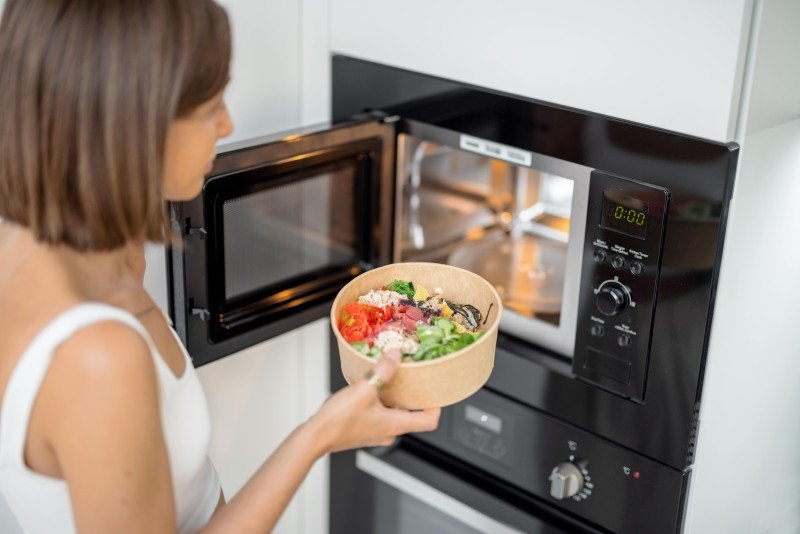Understanding Kitchen Ovens and Hobs: A Comprehensive Guide
The kitchen is frequently described as the heart of the home, and for great reason. It is where families come together, meals are prepared, and memories are produced. Sales Ovens to this cooking sanctuary are 2 essential home appliances: the kitchen oven and the hob. Comprehending their features, types, and functionalities is important for effective cooking and can substantially boost a home chef's experience. This post will look into the world of kitchen ovens and hobs, analyzing their different types, benefits, and ideas for making informed choices.
Tabulation
- Introduction to Kitchen Ovens
- Types of Ovens
- Traditional Ovens
- Convection Ovens
- Microwave Ovens
- Steam Ovens
- Comprehending Hobs
- Types of Hobs
- Gas Hobs
- Electric Hobs
- Induction Hobs
- Benefits of Using Ovens and Hobs
- Selecting the Right Oven and Hob for Your Kitchen
- Upkeep Tips for Ovens and Hobs
- FAQs
- Conclusion
1. Intro to Kitchen Ovens
Ovens are essential home appliances in modern kitchen areas. They supply a regulated environment for baking, roasting, and broiling food. With numerous designs and performances, picking the right oven can drastically affect cooking times, food texture, and taste.
2. Types of Ovens
Traditional Ovens
Conventional ovens are the most typical type found in homes. They utilize either electric or gas power to heat the interior and usually include a single cooking space.
Benefits:
- Versatile for baking, roasting, and broiling.
- Typically economical.
Convection Ovens
Convection ovens resemble traditional ovens but come geared up with a fan that flows hot air throughout the cooking chamber. This results in even cooking and browning.
Advantages:
- Reduced cooking times due to enhanced airflow.
- Improved browning and crisping of foods.
Microwave Ovens
Microwave use electro-magnetic radiation to heat food quickly, making them convenient for thawing and reheating leftovers.
Benefits:
- Very fast cooking times.
- Energy effective.
Steam Ovens
Steam ovens make use of steam to prepare, preserving the wetness and nutrients in food. They are particularly popular amongst health-conscious cooks.
Benefits:
- Healthier cooking alternative.
- Maintains vitamins and minerals in food.
3. Comprehending Hobs
Hobs, likewise called cooktops, are the flat surface areas on which pots and pans are positioned to prepare food. They can be integrated into kitchen counter tops and are readily available in numerous designs, fuel types, and designs.
4. Kinds of Hobs
Gas Hobs
Gas hobs utilize burner as their heat source, using instantaneous heat and exact temperature level control.
Advantages:
- Excellent control over cooking heat.
- Generally less expensive to operate than electric ones.
Electric Hobs
Electric hobs heat utilizing electric coils or glass surface areas. They may take longer to heat up than gas, but they offer a smooth cooking surface area and are easier to clean.
Benefits:
- Even heat distribution.
- Safe, as there's no open flame.
Induction Hobs
Induction hobs utilize electro-magnetic energy to directly heat pots and pans. They need suitable cookware and offer instant responsiveness.
Advantages:
- Highly energy-efficient.
- Faster cooking times and precise temperature control.
5. Benefits of Using Ovens and Hobs
Both ovens and hobs included their own distinct set of advantages that can improve any cooking experience. Here are a few essential advantages:
- Diverse Cooking Options: Both home appliances permit for a series of cooking methods including boiling, frying, roasting, baking, and steaming.
- Time Efficiency: Modern ovens and hobs typically feature fast cooking settings, which save time in the kitchen.
- Accuracy Cooking: With innovative features, users can achieve better results in temperature control and cooking times.
6. Picking the Right Oven and Hob for Your Kitchen
When choosing the right oven and hob, different elements must be thought about:
- Size: Ensure that the appliance fits comfortably in your kitchen area.
- Cooking Style: Consider what kinds of food you often prepare.
- Fuel Type: Whether gas or electric, consider accessibility and performance in your location.
- Budget plan: Determine your budget plan and discover devices that fulfill your requirements within that range.
Checklist for Choosing Your Oven and Hob:
- Assess kitchen space.
- Identify your cooking choices.
- Determine power source accessibility.
- Compare features and requirements.
- Set a spending plan range.
7. Maintenance Tips for Ovens and Hobs
Routine maintenance is essential for keeping ovens and hobs in ideal condition. Here are some maintenance suggestions:
- Clean Regularly: Wipe down surface areas after each use and deep clean periodically.
- Check Seals: For ovens, check door seals to guarantee they are airtight.
- Take a look at Burners: For gas hobs, keep burners without food debris to keep reliable heating.
- Change Filters: If your oven has a filter, change it as advised by the producer.
8. Frequently asked questions
1. What is the difference in between a conventional oven and a convection oven?Conventional ovens
cook food through convected heat, while stove circulate hot air, leading to faster and more even cooking. 2. Do induction hobs require special cookware?Yes,
induction hobs require ferrous cookware that is capable of being magnetized to work effectively. 3. Are steam ovens worth the investment?For health-conscious people or those who often cook veggies and delicate foods, steam ovens can be worth the financial investment
due to their ability to maintain nutrients. 4. Can I integrate an oven and hob into one unit?Yes, numerous producers use combined systems known as range cookers, which incorporate both an oven
and hob into a single appliance. 9. Conclusion Kitchen ovens and hobs are vital components of any culinary space, each offering unique features and functionalities matched for numerous cooking styles.
By comprehending the
kinds of ovens and hobs available, their benefits, and how to preserve them, home chefs can cultivate a more effective and pleasurable cooking experience. Whether one is a seasoned cook or a novice, making informed choices about these important kitchen home appliances is essential.

